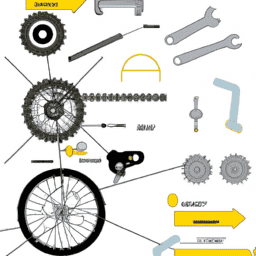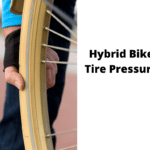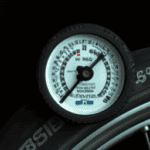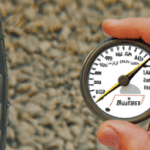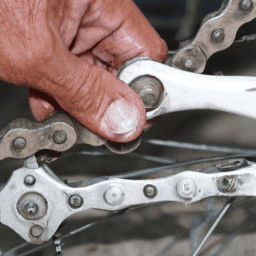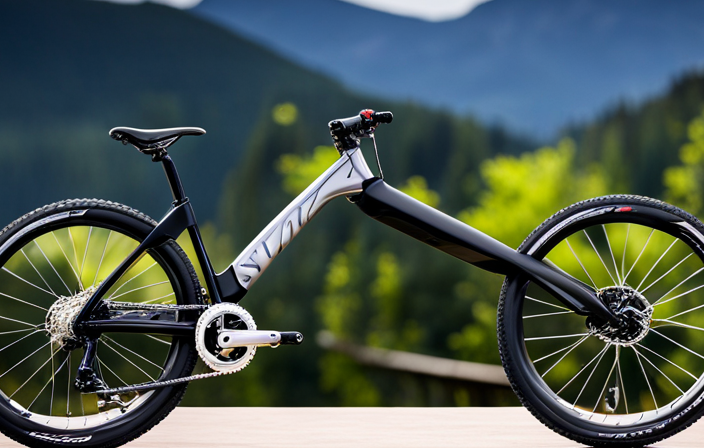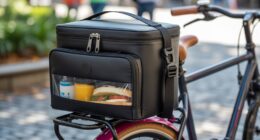If you’re passionate about cycling, chances are you’re familiar with fat tire bikes. Recognized for their oversized tires, these bikes offer numerous advantages for both off-road and on-road cycling. However, if you’re just getting into cycling, you might question the appeal of choosing a fat tire bike instead of a conventional road or mountain bike.
In this article, we’ll explore the benefits of fat tire bikes and explain why they might be a great choice for your next ride. One of the biggest advantages of fat tire bikes is their ability to handle a wide range of terrains. The large tires provide extra traction and stability, making them ideal for off-road adventures. Whether you’re tackling rocky trails, sandy beaches, or snowy paths, a fat tire bike can help you stay upright and in control.
But fat tire bikes aren’t just for off-road use. They’re also great for city cruising, thanks to their comfortable ride and ability to absorb bumps and potholes. In the next section, we’ll take a closer look at the design features that make fat tire bikes so versatile and durable.
Key Takeaways
- Fat tire bikes offer numerous benefits, including improved traction, stability, and comfort on a wide range of terrains.
- There are many different brand options available, each with their own unique features and selling points, so it’s important to do thorough research to find the right fat tire bike for your needs and preferences.
- Fat tire bikes have larger and wider tires compared to traditional bikes, and require special maintenance and care due to their unique features.
- Despite being more expensive than traditional bikes, fat tire bikes are becoming increasingly popular among cyclists and are a good investment for outdoor enthusiasts looking for a fun and challenging riding experience.
Benefits of Fat Tire Bikes
You’re gonna love how fat tire bikes give you more stability and control on rough terrain. Whether you’re snow riding or beach cruising, fat tire bikes offer a comfortable and smooth ride that you won’t find with traditional bikes.
The wider tires provide greater traction, making it easier to navigate through sand, snow, and other challenging conditions. This also means you can ride at lower pressures, which helps absorb shock and makes for a more comfortable ride.
Another benefit of fat tire bikes is their ability to handle obstacles and rough terrain with ease. The wider tires act as shock absorbers, helping to smooth out any bumps or dips in the road. This means you can ride faster and more confidently without worrying about losing control.
Additionally, the wider footprint of the tires allows for increased stability, which is especially helpful when riding on soft or uneven terrain.
With all these benefits, it’s no wonder fat tire bikes are becoming more and more popular. Now, let’s take a look at some of the unique design features that make these bikes stand out.
Design Features
When it comes to the design features of fat tire bikes, there are three key points that you should be aware of. First, the wider tires provide better traction and stability, making them perfect for off-road adventures.
Second, the unique frame design allows for more clearance and larger tires.
Lastly, many fat tire bikes come with suspension, which helps to absorb bumps and shocks, making for a smoother ride.
All of these features combine to make fat tire bikes a great option for anyone looking for a durable, versatile, and fun ride.
Wider Tires
With wider tires, a fat tire bicycle provides better stability and traction on terrain like sand, snow, and mud. The wider tire tread disperses the weight of the rider and bike, providing more surface area for grip. Additionally, the tire pressure can be adjusted to match the specific terrain, allowing for optimal traction and control.
Here are some specific advantages of the wider tires on a fat tire bicycle:
- Improved stability on loose terrain
- Smoother ride over bumps and obstacles
- Increased flotation on soft surfaces
- Enhanced cornering and braking control
Moving on to the next section about the unique frame, the wider tires also require a different frame design to accommodate their size and shape.
Unique Frame
Don’t worry about the frame design being too bulky or cumbersome, as manufacturers have developed unique and innovative solutions to create a sturdy yet lightweight frame that complements the wider tires and enhances the overall riding experience.
The fat tire bike frame is usually made of aluminum or carbon fiber, ensuring durability and minimal maintenance. These materials make the bike lightweight, allowing for greater maneuverability and speed while also keeping the bike from feeling heavy and unwieldy.
Customization options are also available for fat tire bike frames, allowing riders to personalize their bikes to their liking. Different frame designs and colors are available, allowing riders to match their bikes to their personality or riding style.
Overall, the unique frame design of a fat tire bike provides a perfect balance between durability and customization, making it an excellent choice for those who want a bike that can handle all types of terrain and weather conditions.
With that said, the next section will dive into the importance of a good suspension system.
Suspension
To truly enhance your riding experience, you’ll want to consider a fat tire bicycle with a reliable suspension system. This will not only improve your comfort and reduce fatigue, but it will also allow you to tackle more challenging terrain with greater ease.
Here are some types of suspension systems you should consider for your fat tire bike:
-
Full Suspension: This type of suspension system includes both front and rear suspension, providing the most comfortable ride. It’s great for technical and rocky terrain, as it absorbs shocks and bumps effectively.
-
Front Suspension: Also known as a suspension fork, this system only includes a suspension on the front wheel. It’s lighter and simpler than full suspension, making it a popular choice for cross-country riding.
-
Rigid: This type of bike has no suspension at all, making it the lightest and simplest option. While it’s not as comfortable on rough terrain, it’s great for smooth, flat surfaces and can be easier to maintain.
When it comes to suspension maintenance, there are a few things you can do to keep your bike running smoothly. Regularly check your suspension for any signs of wear or damage, such as leaks, cracks, or loose parts. Keep your suspension clean and free of dirt and debris, and lubricate it regularly to prevent rust and corrosion. By taking these simple steps, you can ensure that your fat tire bike’s suspension will last for many off-road adventures to come.
Now that you know about the different types of suspension systems and how to maintain them, it’s time to hit the trails and put your fat tire bike to the test. In the next section, we’ll explore some of the exciting off-road adventures you can have with your new ride.
Off-Road Adventures
You’re going to love cruising through rugged terrain on a fat tire bicycle – it’s like gliding on clouds! Fat tire bikes are built to tackle any off-road adventure you can throw at them.
Whether you’re planning a bikepacking trip or hitting up some challenging mountain biking trails, fat tire bikes are the perfect tool for the job. What’s great about fat tire bikes is that they offer excellent traction and stability on varying terrain.
Their wide tires provide superior grip on soft surfaces like sand, snow, and mud, while also being able to handle rocky and technical sections with ease. Plus, the added suspension of fat tire bikes means that you’ll have a smoother ride over bumpy terrain, reducing the impact on your body.
So, get ready to conquer any obstacle that comes your way and explore the great outdoors on a fat tire bike. And when you’re ready to hit the city streets, you’ll find that fat tire bikes are just as comfortable and versatile for urban cruising.
City Cruising
Ready to explore the city streets? Hop on your trusty ride and enjoy cruising through the urban landscape, taking in all the sights and sounds around you. With a fat tire bike, cruising through the city has never been more enjoyable. These bikes are designed to tackle any urban terrain and provide a comfortable, smooth ride.
Here are some cruising tips to keep in mind when riding your fat tire bike through the city:
| Column 1 | Column 2 | Column 3 | Column 4 |
|---|---|---|---|
| Stay Alert | Use Hand Signals | Watch for Pedestrians | Wear Protective Gear |
First and foremost, stay alert at all times. Urban terrain can be unpredictable and you never know what obstacles may appear in your path. Use hand signals when turning or changing lanes to ensure that other riders and drivers are aware of your intentions. Watch for pedestrians, especially when riding on bike paths or in crowded areas. Finally, don’t forget to wear protective gear, such as a helmet, to keep you safe in the event of an accident.
Now that you have some cruising tips, it’s time to find the right fat tire bike for your needs.
Finding the Right Fat Tire Bike
Now that you’re familiar with the benefits of city cruising on a fat tire bike, it’s time to find the right one that suits your needs.
One important factor to consider is the price range of the bike you’re looking for. Fat tire bikes can range from budget-friendly options to high-end models that come with advanced features and components. It’s important to determine your budget beforehand so you can narrow down your options and make a more informed decision.
When it comes to brand options, there are a lot of choices available in the market. Some popular brands that specialize in fat tire bikes include Surly, Salsa, and Framed. Each brand has its own unique selling points and features that cater to different types of riders. It’s important to do your research and read reviews from other riders to get a better idea of the quality and performance of each brand.
Overall, finding the right fat tire bike requires careful consideration of your budget, needs, and preferences, as well as thorough research on the available brand options.
Frequently Asked Questions
Are fat tire bikes suitable for long distance rides?
You’ll be amazed at how comfortable and efficient fat tire bikes are for long distance rides. Choosing the right gear is crucial for both comfort and speed. Additionally, these bikes are perfect for adventure seekers who enjoy exploring off-road trails. Check out ‘Choosing the Right Gear: A Guide for Long Distance Fat Tire Rides’ and ‘Exploring Off Road Trails: Fat Tire Biking for Adventure Seekers’ for more details.
Can fat tire bikes be used for racing?
Yes, fat tire bikes can be used for racing with proper training techniques and fitness requirements. They offer increased stability and traction on rough terrain, making them suitable for off-road races and events.
What kind of maintenance do fat tire bikes require?
Did you know that fat tire bikes require more maintenance than regular bikes? To keep your bike running smoothly, use the best cleaning practices and have essential tools on hand. Regularly clean and lubricate the chain, inspect the tires for wear, and check the brakes for proper function.
Are fat tire bikes more expensive than regular bikes?
When comparing cost, fat tire bikes generally come at a premium due to their specialized components and market demand. However, prices vary depending on the brand, materials, and features.
How long do the tires on a fat tire bike last?
You may be surprised to learn that the lifespan of fat tire bike tires varies greatly depending on the brand and usage. Pros include increased grip and stability, but cons can include added weight and higher cost. Best brands include Surly and Salsa.
Conclusion
So, why choose a fat tire bike? You’ve learned about the many benefits, from their versatility on different terrains to their comfortable ride. You’ve explored the unique design features that make these bikes stand out from traditional bicycles. And you’ve discovered the many adventures waiting for you, from off-road trails to leisurely city rides.
But how do you choose the right fat tire bike for you? Consider your riding style, the terrain you’ll be exploring, and your budget. Do some research, read reviews, and test ride different models to find the perfect fit.
For example, let’s say you’re a mountain biker looking for a new challenge. You’ve been riding on traditional mountain bikes for years, but you’re ready to take on more technical terrain. A fat tire bike might be just what you need to tackle those rocky, muddy trails. With its wider tires, you’ll have more stability and traction, allowing you to take on more challenging obstacles with confidence. And with the added comfort of a fat tire bike, you’ll be able to ride longer and harder without feeling fatigued.
In conclusion, a fat tire bike can open up a world of possibilities for any rider, whether you’re looking for off-road adventures or a comfortable ride around the city. With the right research and consideration, you can find the perfect fat tire bike to fit your needs and take your riding to the next level. So why not give it a try and see where your fat tire bike can take you?

